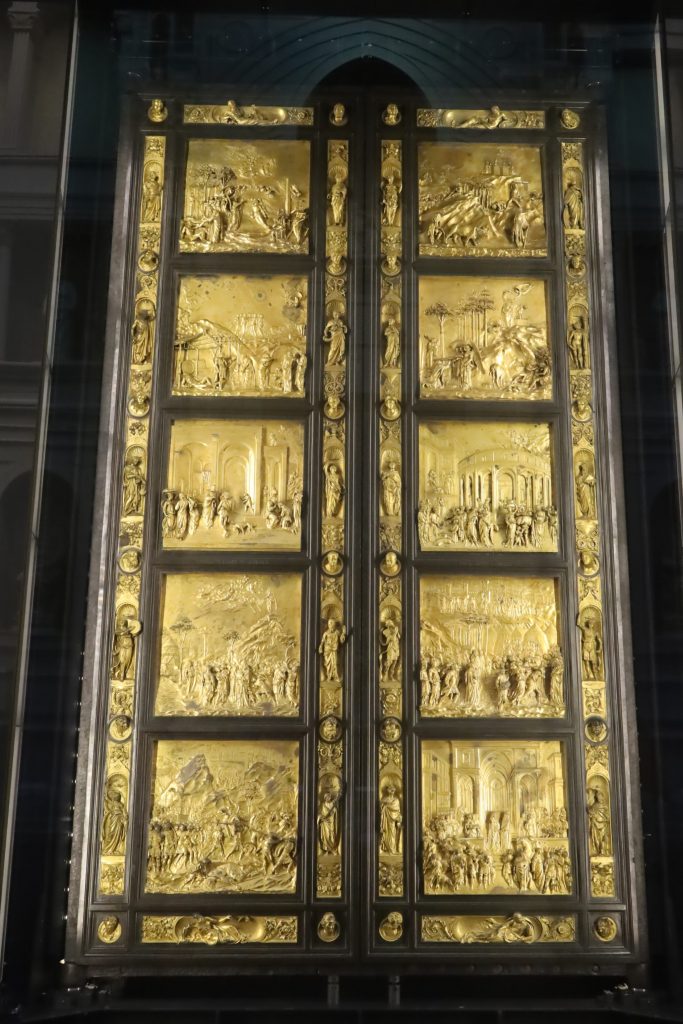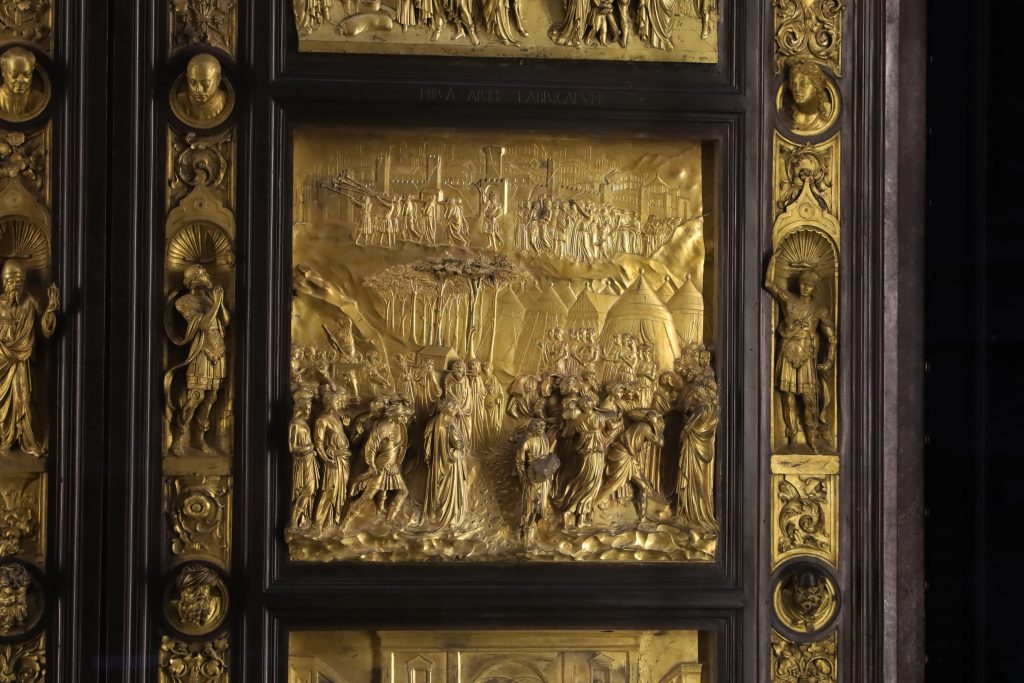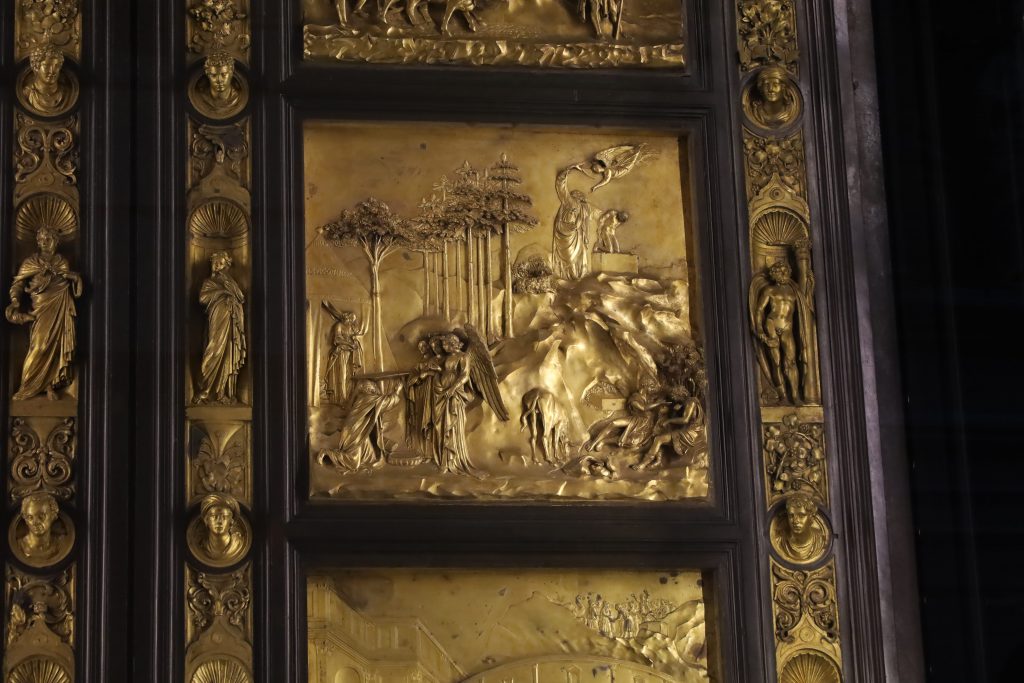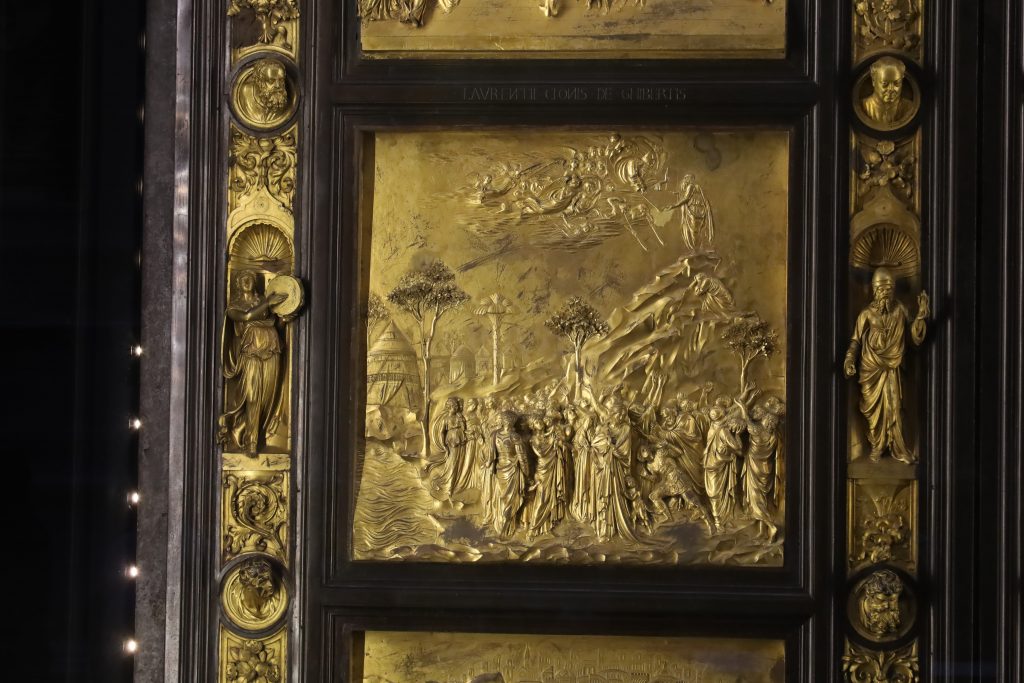
Introduction: The Baptistry Door at Florence Cathedral, known as the “Gates of Paradise,” is one of the most celebrated and significant works of art in the history of Western civilization. Created by the Italian sculptor Lorenzo Ghiberti, this masterpiece of Renaissance art stands as a testament to the artistic and cultural brilliance of Florence. The Baptistry Door not only showcases exceptional craftsmanship but also encapsulates profound religious symbolism and humanist ideals, making it an enduring symbol of the Florentine spirit and the Renaissance era.

Artistic Brilliance and Technical Mastery: The Baptistry Door consists of a set of bronze panels adorned with intricate relief sculptures. Ghiberti spent over two decades meticulously crafting these panels, displaying his exceptional skill as a sculptor. The craftsmanship demonstrated in the Baptistry Door is remarkable, with each panel featuring exquisite details and a sense of naturalism that brings the scenes to life. Ghiberti’s ability to manipulate the bronze material to create depth, texture, and perspective is a testament to his technical mastery.
The narrative scenes depicted on the panels tell stories from the Bible, such as the Creation of Adam and Eve, the Story of Noah, and the Sacrifice of Isaac. Ghiberti’s skillful composition and use of perspective give the figures a sense of movement and dramatic tension. The artistry displayed in the Baptistry Door reflects the ideals of the Renaissance, which emphasized the revival of classical aesthetics and the celebration of human potential.
Religious Symbolism and Iconography: Beyond its artistic brilliance, the Baptistry Door serves as a rich source of religious symbolism. The panels not only convey biblical narratives but also communicate deeper theological and philosophical themes. Ghiberti skillfully employed iconographic elements to convey spiritual ideas and engage the viewer in contemplation.
For instance, the central panel portrays the story of Abraham’s sacrifice of Isaac, a tale that epitomizes the concept of faith and obedience. Ghiberti captures the emotional intensity of the moment, depicting the anguish and resolve of Abraham as he prepares to sacrifice his son. Through this scene, Ghiberti invites the viewer to reflect on the themes of sacrifice, devotion, and the complexities of human existence.


Humanist Ideals and Renaissance Spirit: The Baptistry Door stands as an embodiment of the spirit of the Renaissance, a period characterized by a renewed interest in human potential, intellectual curiosity, and artistic innovation. Ghiberti’s creation of the Baptistry Door marked a significant departure from the rigid medieval artistic tradition, showcasing a profound understanding of human anatomy, expression, and perspective.
The work also reflects the influence of humanist ideals, which placed a strong emphasis on the dignity and worth of the individual. The figures depicted on the panels possess a sense of individuality, with distinct facial expressions and gestures that convey their unique personalities. This humanistic approach to art was a departure from the medieval tradition that emphasized the spiritual and otherworldly.
The Influence and Legacy: The impact of the Baptistry Door on the art world cannot be overstated. Its exceptional craftsmanship and innovative approach to composition and perspective set new standards for artistic achievement. The success of Ghiberti’s work also led to him being commissioned to create a second set of doors for the Baptistry, which further solidified his status as a master sculptor.
Moreover, the Baptistry Door became a source of inspiration for future generations of artists and sculptors. Its influence can be seen in the works of renowned artists such as Michelangelo and Donatello, who were inspired by Ghiberti’s innovative use of relief sculpture and mastery of bronze casting techniques.
The original set of doors created by Lorenzo Ghiberti for the Florence Baptistery is no longer in place. Due to preservation concerns, the original doors were replaced with replicas, and the original panels were moved to the Museo dell’Opera del Duomo (Museum of the Works of the Cathedral) in Florence. The museum houses a collection of sculptures, artifacts, and artwork related to the Florence Cathedral complex, including Ghiberti’s original panels from the Baptistry Door. Visitors to the museum have the opportunity to admire and appreciate these historical and artistic treasures up close.
